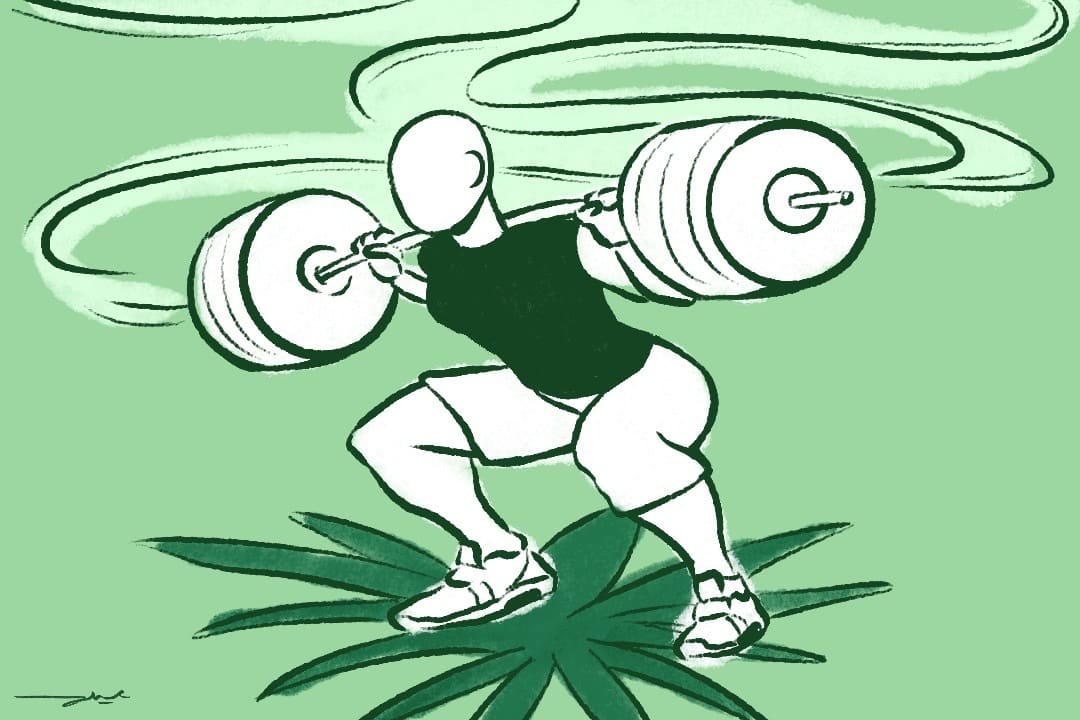In late September, the National Collegiate Athletic Association (NCAA) Committee on Competitive Safeguards and Medical Aspects of Sports recommended the NCAA remove cannabinoids from its banned drug classes. The recommendation came after the 2022 Summit on Cannabinoids in College Athletics last December provided a better understanding of marijuana usage at the college level. The summit’s consensus was that cannabis was not a performance-enhancing substance.
Allowing marijuana usage in sports garnered support after several prominent athletes received suspensions and bans for using marijuana. A prominent example was when American sprinter Sha’Carri Richardson was suspended from the US Olympic track and field team for a month in 2021, which meant that she could not compete at the 2020 Tokyo Olympics. Despite Richardson’s success in winning the 100-metre dash at the US Olympic trials, according to the World Anti-Doping Agency’s (WADA) list of prohibited substances, her efforts were for naught thanks to the supposed unfair advantage she received and the poor example she purportedly set for the sporting world.
Since 2004, the WADA has continued to publish a list of banned substances each year chosen based on three criteria: their potential to enhance athletes’ abilities, their potential to pose a health risk, or if their use violates the “spirit of sport.” Yet, the WADA’s criteria can be used to re-examine its ban on marijuana and other substances, ultimately proving the ban’s invalidity.
Flawed criteria
A 2011 journal article published in part by the WADA found marijuana to aid athletes in reducing stress before and during competition, and thus found that it allowed them to perform better under pressure. However, a 2017 systematic review published in the Journal of Science and Medicine in Sport reviewed 15 studies examining the effect of tetrahydrocannabinol (THC) — the principal psychoactive agent in marijuana — and found no evidence of athletes’ improvement in aerobic performance as a result of THC. If the WADA’s argument centres around marijuana’s anxiety-alleviating qualities as the sole reason it is considered performance-enhancing, it brings into question why cannabidiol (CBD), a cannabinoid within marijuana, has been exempted from the prohibited substance list. While CBD lacks psychoactive properties, it is anxiolytic and thus may reduce stress for some athletes.
Cannabis is also considered a health risk by the WADA, which found it slows reaction times, causes poor decision-making, and increases risk-taking. This finding also relates to the third criterion — that it could violate the “spirit of the sport.” The impaired judgement associated with the presence of cannabis and the potential for it to compromise the welfare and safety of other participants is one of the reasons why the WADA argues that marijuana violates the “spirit of the sport.” Other factors in the WADA’s decision include respect for laws — as cannabis is illegal in several countries — and guidelines on athletes’ characters, as these athletes are expected to behave like role models.
With countries across the world moving towards cannabis legalization, these factors come into question. If legality is no longer an issue, would cannabis still be considered a detriment to an athlete’s character? Why are athletes evaluated based on being a role model in the first place? And if marijuana compromises the safety of other participants, why are athletes in the Olympic Village allowed to drink alcohol?
A consequential and hypocritical ban
The WADA’s questionable criteria influence many sports, as it employs third parties for drug testing who test based on the WADA’s list. The purpose of drug testing is to prevent performance enhancement and ensure the safety of athletes, yet it can end up damaging their careers when the reasoning behind punishments is flawed.
A prominent example of this is the aftermath of the 2015 mixed martial arts bout between Anderson Silva and Nick Diaz, which was overturned to a no-contest. Diaz tested positive for marijuana, which resulted in a five-year ban for the veteran. Silva also tested positive, but not for cannabis — instead, he tested positive for drostanolone and androsterone, two anabolic steroids.
Anabolic steroids boost athletic performance by helping build muscle and increase body mass. When compared to marijuana, one would assume the punishment for the use of anabolic steroids, which do improve athletic performance and present greater health risks — such as kidney failure, liver tumours, or strokes — would be more severe. But Silva was banned for only a year.
The reasoning provided for Diaz’s longer suspension was that it was his third offence. Yet, naturally, this would imply that when Silva tested positive again — this time for the anabolic steroid methyltestosterone — in the lead-up to his bout against Kelvin Gastelum in late 2017, he should have received a harsher punishment. However, he was only suspended for a year.
The severity of punishments for cannabis use, regardless of the actual harm and performance-enhancing capabilities of the substances consumed, reiterates the issue with the WADA’s criteria. Ensuring athletes’ safety by banning substances that could harm them is a great cause. However, involving factors such as the “spirit of the sport” puts unnecessary and undeserved pressure on athletes to be role models and only serves to discredit the prohibited substance list. This stops athletes from using substances like marijuana — which they may depend on for medical reasons, in turn undermining the WADA’s goals regarding athlete safety.


